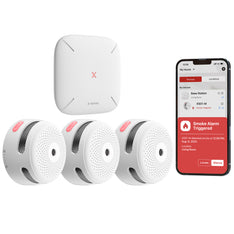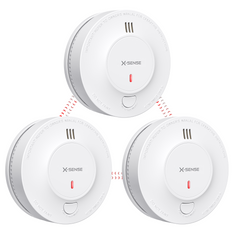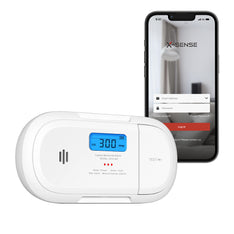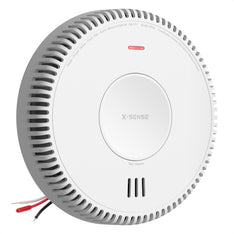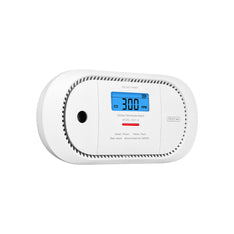Best Wireless Smoke Detectors of 2022
Fri, May 22, 2020
First alert, Kiddle and X-Sense are some of the top brands of wireless interconnected smoke detectors. In this release, we are going to look at some of the best models, their features, and how they use the Radio Frequency technology in receiving and transmission of messages.
We shall also look at the benefits that come with using interconnected smoke detectors, and the useful installation tips to ensure they serve you the very best in protecting your home from fires. To begin with, let’s have a look at how they work as an interlinked system.
What Are Interconnected Smoke Alarms?
Interconnected smoke alarms work together as interlinked systems and not as independent units like conventional smoke alarms. Their connection is wireless, and therefore, they use radio frequency (RF) in there transmission. When one unit goes off in the connection, all the other smoke alarms in the connection are immediately triggered.
RF technology and how the interconnected detectors work
The Radio Frequency (RF) technology has become very popular; this is because it makes the installation of interconnected smoke alarms easy. Depending on the model of units being connected you can have up to 40 units in a connection
The connection works typically as one would pair Bluetooth devices. The meager difference between the two is that the detectors have a greater range, and you can connect a good number of units,
The interconnected detectors are powered by high-quality lithium batteries, which offer up to ten years of service without the need to be replaced or charged. The cost of such units is $80, but there are more expensive but advanced types with mobile connection capabilities. Such can be operated remotely from your connected mobile phone. They also notify you when as well as where they have activated.
The Benefits of Interconnected Smoke Alarms
Below we shall look at an in-depth outline on the different benefits of installing interconnected smoke alarms in your home
1. Full home coverage
The interconnection of smoke alarms ensures there is full coverage in your home. This is because all the detectors will sound an alarm immediately when one of them in the connection does. A good example is, if one unit in the connection triggers an alarm in the top floor of your home, the unit in the basement will sound an alarm immediately. Therefore regardless of the room in which you are, you will get the alarm alert in good time; hence you will have ample time to evacuate.
This, however, is not the case if you are using smoke alarms operating as independent units. Such also limit the chance of being able to escape a home fire because you will surely miss the alert or rather, it will be too late.
2. Wireless connection
Unlike in the previous versions of smoke alarms that were hardwired and connected to the main electrical system, present-day interconnected detectors use wireless technology. They are powered by high-quality lithium batteries and are easy to install.
They use the RF technology in transmission, and your home is protected in the event of a power outage. Due to technology advancement, voice and location features are available in some modern smoke detectors. The two afro-mentioned features enable you to choose the most secure path during evacuation.
3. Interconnected smoke alarms are safer
They are safer compared to smoke alarms that work independently as single units. This is because you will get the alert immediately regardless of your location and the precise point where the fire has begun. This is unlike the conventional detectors where you will not get the notification of fire in your kitchen if you are in the basement.
4. Required for new home constructions
It is a requirement by the laws of many states that every new construction be installed with wireless detectors. If you are buying or constructing a new home, ensure you install interconnected smoke alarms to benefit from the early warning, assurance of safety, and conformation with the law.
The Top Three Interconnected Smoke Alarms
Below are some of the top three interconnected smoke detectors and their features.
1. X-Sense XS01-WR Smoke Alarm
It is one of the top interconnected smoke detectors and meets all the safety standards outlined by CE and TUV. It is simple to install, and they can either be mounted on the ceiling or wall. The sensor offers 10 years of service, but for the battery you will have to replace every 5 years.
Features:
- It has advanced photoelectric sensors hence it is less likely to trigger false alarms
- It is powered by a replaceable lithium battery
- Has a red LED indicator light
- It relies on Radio Frequency technology in receiving and transmitting messages
- Allows interconnection of up to 24 compatible units
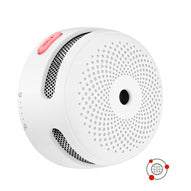
X-Sense XS01-WR Wireless Smoke Detector
- Wireless technology uses radio frequency to transmit and receive messages.
- If one alarm goes off, the rest of the interconnected alarms will alert as well.
- 5-year replaceable battery and 10-year sensor life.
- Advanced photoelectric sensor is more sensitive and reduces false alarms.
$29.99
2. Kiddle 21026044 Wireless Interconnected Smoke Detector
It meets all the UL requirements and allows the interconnection of 24 compatible detectors. Easy to install because it does not require wiring or rewiring in case you need to change its position. Uses RF technology and operates efficiently in a relative humidity of 85%.
Features:
- It uses photoelectric sensors in detecting smoke particles
- It is battery powered
- It has flashing LED lights
- Smart touch or Hush button on its interface for testing and silencing
- It has a lock pin for tamper resistance
3. First alert SA511CN2-3ST Wireless Interconnected Smoke Detector
They use the RF technology and hence do not require wiring in their connection. The voice feature in this type of detector has 11 choices preprogrammed to tell the precise location of danger. Its sensors are advanced, and the chances for them to trigger false alarms is minimal
Features:
- It uses a photoelectric sensor
- Powers by two AA batteries
- It has the voice alert, which tells the precise location of danger.
- Has a test and silence button on its interface
- LED light alerts for notification when the battery is low
Tips for Wireless Interconnected Alarms Installation
When installing interconnected smoke alarms you will have to consider the tips listed below
- 18 is the maximum number of units you can interconnect; however, for smoke alarms, the number reduces to 12.
- The circuit breaker must power all the units in the connection.
- The length of wire used to connect the units should not be more than 300 meters.
- The recommended type of wire in is readily available in electrical and hardware stores
- Conformity of all wiring with the NFPA 70 (NEC) and local electrical codes should not be compromised. You can refer to the local building code, NFPA 72 and NFPA 101, for the requirements.
- In case of any doubt about the requirements, consult with professional and experienced electricians to help you in the installation process.
- Ensure all the alarms you intend to interconnect are compatible
- For the case of other devices like bells, door closers, or lights, up to 6 compatible devices can be interconnected.
Conclusion
Conclusively, wireless interconnected smoke alarms are the perfect choice to ensure and assure you the safety of your household from home fires. When purchasing interconnected detectors, ensure they conform to all safety standards, and their features have full coverage of your home. You can choose from top brands like First Alert Kiddle and X-Sense.
You may also like: Wireless Smoke Alarm User's Guide